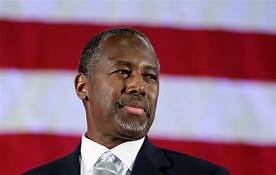OTHER NEWS
Veteran Homelessness Declines
- Wednesday, 07 November 2018
- Originating

The number of homeless veterans has decreased, continuing a trend that started several years.
The ranks of homeless veterans decreased 5.4 percent in 2018, and is down 50 percent since 2010, according to Annual Homeless Assessment Report from Housing and Urban Development. “We owe it to our veterans to make certain they have a place to call home,” said Carson. “We’ve made great strides in our efforts to end veteran homelessness, but we still have a lot of work to do to ensure those who wore our nation’s uniform have access to stable housing.”
Communities have reported a reduction in the number of homeless veterans living in shelters, or on the streets, noted Ben Carson, secretary of HUD, and Robert Wilkie, secretary of the Department of Veteran Affairs.
Each year, thousands of local communities around the country conduct one-night Point-in-Time estimates of the number of persons experiencing homelessness—in emergency shelters, transitional housing programs and in unsheltered locations.
This year’s estimate finds 37,878 veterans experienced homelessness in January 2018, compared to 40,020 in the same time period a year earlier. HUD estimates that 23,312 homeless veterans lived in shelters; while 14, 566 lived in in places that weren’t meant for human habitation.
Also, there was an almost 10 percent decline in female veterans experiencing homelessness. In January 2018, there were 3,219 female veterans that were homeless, compared with 3,571 in the same period a year earlier.
The decrease in veteran homelessness can largely be attributed to the effectiveness of the HUD-VA Supportive Housing Program, combining permanent rental assistance with case management and clinical services provided by the VA. Also, there are programs that use modern tools and technology to identify the most vulnerable veterans and work with them on housing.
More than 4,000 veterans, many suffered from chronic forms of homelessness, found permanent housing and support services through the HUD Vash program. An additional 50,000 veterans found permanent housing and support services through the VA’s continuum of homeless programs.
All told, 64 local communities and three states have declared an effective end to veteran homelessness, creating systems to ensure that a veteran’s homelessness is rare, brief and one-time.
Read more...
Loan Stream Launches Correspondent Channel
- Tuesday, 06 November 2018
- Originating

Loan Stream Mortgage plans to offer non-prime loans through a correspondent lending channel it’s launching. The opportunity emerged because rates increased and the refi business was a distant memory.
"When things get tough in the market, we look to capitalize when others are consolidating and use that time to grow in unique ways," says LSM's Chairman and CEO said Rabi Aziz, chairman and CEO of Loan Stream. The reason for the move is paucity of prime loans—given the rate increase.
But the chance, even for contrarians, is relatively short.
"We believe there is at least a 12 to 24-month period where other bankers could use our specialty services to launch their own nonprime divisions,” said Lina Colon the company's President. “If we help them grow through non-delegated correspondent services, we hope to keep them, down the line, when they are ready to go delegated."
Loan Stream is not new to the non-prime lending market. It entered the market in 2013 and has been offering them through wholesale and retail channels. Correspondents will be handled with a hands-on approach with sellers, educating them on the product, and helping them through the first few originations.
With average loan sizes over $600k, sellers don't want to risk having loans on their warehouse lines that [investors will balk at purchasing] ,” said Serene Vernon, COO for Loan Stream. “It is very important to train each seller individually, helping them through their first loans with extra time and attention.”
Read more...
Employment Increases Continue on Torrid Pace
- Friday, 02 November 2018
- Originating

The Department of Labor reported that employment hit a record high of 156,562,000 in October. There were 250,000 new jobs added, or 4.5 million new jobs since November 2016, with gains recorded across all industries.
For the second straight month, the unemployment rate is 3.7%, the lowest rate since 1969. Six times this year, the unemployment rate has been under 4%, and the unemployment rate for Hispanic Americans was the lowest ever recorded, according to the Department of Labor.
“The housing sector registered job gains this month, but the stronger growth in average hourly earnings relative to the private sector overall suggests that labor availability remains a challenge,” said Doug Duncan, chief economist at Fannie Mae. “Information from the household survey indicates that the unemployment rate remains low and steady at a level last seen in 1969.” Gross Domestic Product in the third quarter was 3.5% and consumer confidence was the highest in more than 18 years.
All of which is good news for workers, who are beneficiaries, and are taking home more money.
"Over the past year, we have had the largest increase in average hourly earnings since 2009,” said Alexander Acosta, secretary of labor at the DOL. “It’s encouraging to see that Americans are seeing more in their paychecks as job creators compete for the best talent in the workforce.’
And don’t fear inflation.
“Meanwhile, average hourly earnings accelerated over the year,” said Fannie’s Duncan. “The increase in earnings is a welcome sign for workers and is unlikely to stoke faster inflation given the steady improvement in productivity. The updated information released today suggests that the labor market remains strong and inflation remains manageable, supporting our call that the Fed will raise its key policy rate in December.”
Read more...Upstart Upgrade Closes 1st Securitization
- Thursday, 01 November 2018
- Originating

Upgrade Inc. closed its first securitization of $282 million of personal loans to almost 20 banks and asset managers.
This transaction inaugurates Upgrade's securitization program, designed as a quarterly issuance program. Credit Suisse and Jefferies acted as joint lead underwriters, and Upgrade served as sponsor, servicer and administrator for the transaction. Upgrade has raised $142 million in equity capital and facilitated over $1 billion in loans since launch in April last year.
“Our securitization program is designed to provide liquidity and a lower cost of funds to our loan buyers through a standardized issuance program," said Renaud Laplanche, co-founder and CEO of Upgrade. "We believe this securitization program is the ideal complement to our marketplace approach whereby banks and asset managers can buy consumer loans and personal credit line balances on an on-going basis."
Upgrade is securitizing receivables from its Personal Credit Line product.
Through Credit Line, consumers are approved for up to $50,000 and can request an advance on the line when they need it, subject to credit approval. Borrowers gain the flexibility to access funds when they need them, and the predictability of a fixed rate and equal monthly payments. Credit Lines can be used like a home equity line of credit—though consumers can obtain approval for a Personal Credit Line in a matter of minutes without collateral or an appraisal process.
Similar to an installment loan, each advance has a fixed rate and term, making it easy to budget for monthly payments. There is no fee to open the line and no fee to use the line. Customers are only charged interest on the amount they use, and the funds are deposited directly into their bank account. Payment terms will vary from 12 to 60 months.
Read more...

